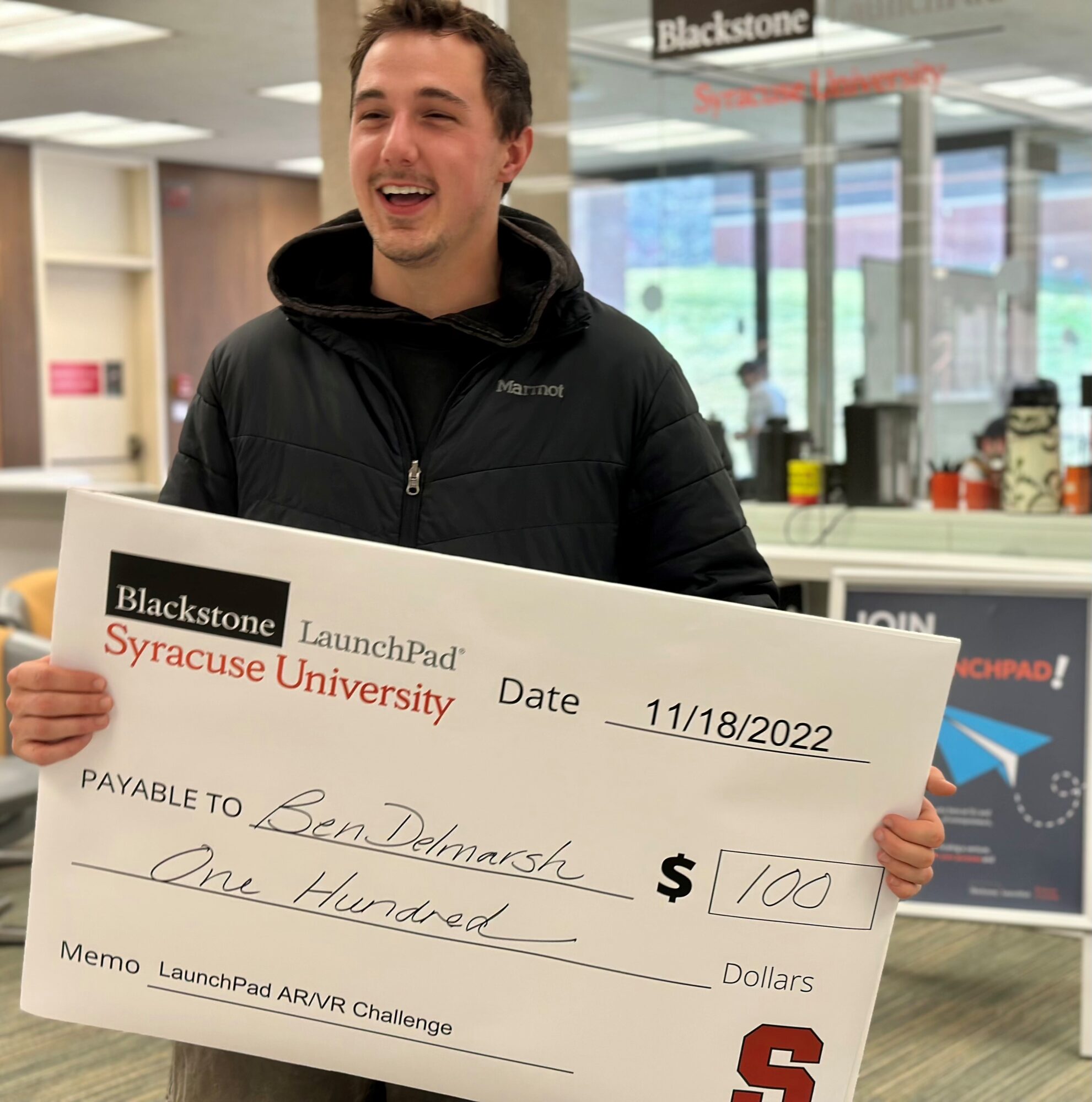
Ben Delmarsh ’22 (VPA major in communications and rhetorical studies) won the LaunchPad’s first AR/VR Innovation Challenge for Afterlife AR – a concept to capture a person, their stories and memories in AR. The competition was judged by SU LaunchPad alum Shawn Gaetano, a recent graduate of the Techstars LA music accelerator who is building his AR company, Solace Vision, in Tulsa.
It’s the one thing we can’t escape. Death — specifically death tech — has become a growing industry in the face of an aging population. Research indicates that 111,320 baby boomers are likely to die this year, 221,347 will die in 2029, and 388,860 in 2039. Boomer deaths will reach a peak in 2044, when 420,236 people born between 1946 and 1964 will die.
But it is not just planning for death. It is facing the challenges that accompany aging and life stage planning. Every 65 seconds, someone in America develops Alzheimer’s. It is estimated that nearly 500,000 new cases of Alzheimer’s disease will be diagnosed this year Those are small numbers compared to the 1.7 million people of all ages who die from a chronic illness each year.
With those numbers comes a market opportunity to capture stories, memories and make meaning for those facing mortality. Death tech is increasingly focused on Innovations that provide people with tech enabled solutions related to end-of-life planning, with startups pioneering innovations around end-of-life space for families, aging populations, people facing challenges such as Alzheimer’s, ALS, MS, Parkinson’s disease or other chronic conditions, the terminally ill, or those planning for the inevitable.
Delmarsh is working on an idea for a mobile app that uses augmented reality (AR), which is a digital interface – both iOS and Android — on a smartphone, iPad or tablet, to display a virtual model of la person, layered over wherever it is being viewed, using photogrammetry (PG).
Families of loved ones could enjoy AR encounters with loved ones from anywhere, offering personalized memories, reflections and experiences which can cross over time and space through generations to come.
And, for those that like to explore old graveyard and gravesites, someone could scan a barcode, and virtually meet interesting individuals and learn more about them in their own words.
Delmarsh plans to use photogrammetry, a series of photographs at both close and long range of a person which can be collected and analyzed with software, and converted into accurate 3D models. It is a cost-efficient means to quickly produce very accurate models for AR at scale. By contrast, custom built AR requires memory of how an object looks to build its digital equivalent and is extremely time consuming and bespoke.
Using PG technology, photos will be transformed into three dimensional digital assets that can be configured with software and AR apps typically built for mobile devices using tools through engines like Unity, Unreal Engine, Vuforia, and ARKit.
Coming in second place in the LaunchPad AR/VR Innovation Challenge was the team of Jack Ramza ’22 G’23 and Zach Goldstein ’22 G’23 for their concept for DIVR, an AR platform to discourage driving under the influence.